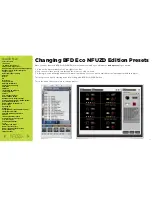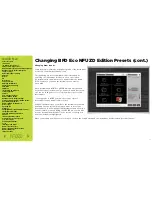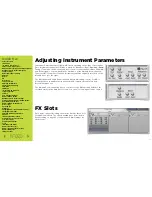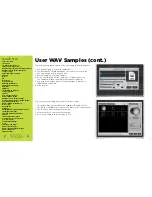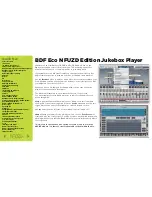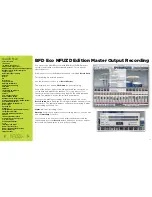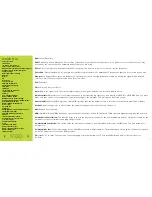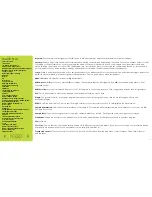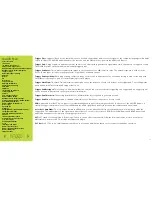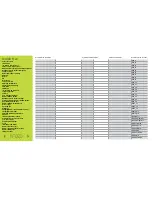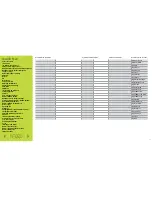
Quick Nav
Table of Contents
Introduction
I/O Module Panel Layouts
Snare and Tom Trigger Zones
NFUZD USB Key (Drive) and Data Management
NSPIRE Series I/O Module Navigation
Trigger Settings
Hi-Hat (HH) Trigger Settings
Kit Menu
Reverb
EQ
Mixer Menu
Saving a UserKit
Adjusting the MIDI Map
Trigger Function Settings
Click Menu
SEQ Menu
Integration with Computer
Setup Suggestions
Sync Key
Auto O
ff
and Sleep Mode
BFD Eco NFUZD Edition
NSPIRE Series I/O Module Settings
Getting Started w/ BFD Eco NFUZD Edition
Basic Mixing Adjustments
BFD Eco NFUZD Edition E
ff
ects
Grooves Page
Options Menu
Help Menu
Changing BFD Eco NFUZD Edition Presets
Changing Drum Sounds
Adjusting Instrument Parameters
FX Slots
Instrument and Mixer Faders
Getting New Professional Sounds
User .wav Samples
Exporting Sound Banks
Loops
Installing Sound Banks
BFD Eco Jukebox Player
BFD Eco Master Output Recording
BFD Eco Mixing Tips
Included Sounds
EQ:
Musical Equalizer.
FAQ:
Frequently Asked Questions. These will be featured on the website for each product. It is a great resource for questions you may
have about the operation of the hardware and software you are using.
Filter:
Filter is a frequency–dependent amplifier circuit that can be used to boost or reduce a specific frequency.
Filter Mod:
Filter Modulation is a signal-processing e
ff
ect that modulates the amplitude of frequencies that can be selected by the user.
Flanger:
In a flanger e
ff
ect, there are frequency dependent notches in the signal that are created by mixing the signal with a delayed
version of itself. Flangers tend to sound like a "whoosh" e
ff
ect.
FW:
Firmware.
FX:
Commonly refers to e
ff
ects.
Gain:
Gain is the signal level. There are multiple stages in the signal chain that can include a Gain function.
Gain Structure:
Gain structure is very important. When you are putting together your sound design in BFD Eco NFUZD Edition, you must
make sure that you do not overdrive the signal at any stage of the program. This will create a distorted sound.
General MIDI:
General MIDI is a group of basic MIDI settings that are the default for most electronic musical instruments and software.
Global:
Global settings refer to the fact that the parameter applies to all of the items in the device.
GUI:
Graphic User Interface.
HDD:
Hard Disc Drive. HDDs all have an operational revolutions per minute (RPM) speed. 7200 rpm and higher are appropriate for music.
Hi–Hat Noise Cancellation:
This function helps to ignore the physical movement of the Hi–Hat hardware and the vibrations created by the
hardware in order to eliminate false triggering of sounds.
Hi–Hat Splash Sensitivity:
This setting takes the physical movement of a Hi–Hat splash and creates a MIDI event. This is adjustable for
each person.
Hi–Hat Split Points:
The Hi–Hat sounds for the NSPIRE system use multiple samples. The area between each degree of openness is a split
point. The Module uses four zones. BFD uses five.
I/O:
Stands for In / Out. There are two types that apply to musical instruments. Those are MIDI I/O and Audio I/O. Some devices
do both.
6 6

